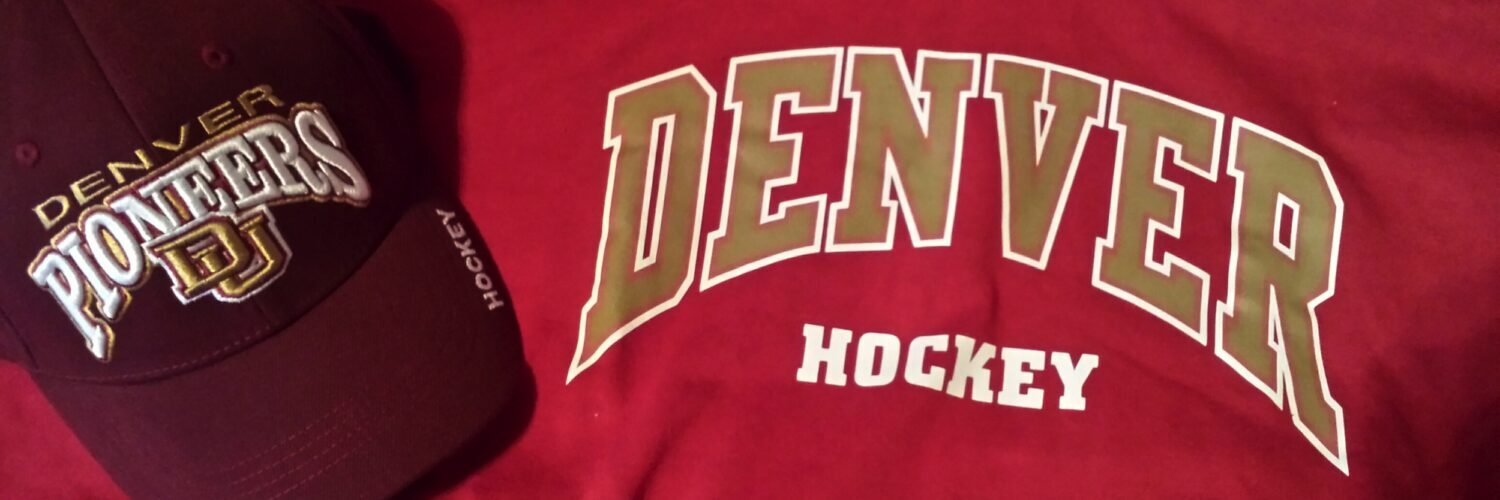Back in December the University of Denver was a .500 hockey team – good at times, marginal at others. It was also a young team, and one that was prone to streaks.
In their 7-7-2 start, the Pioneers scored 47 goals … and allowed 47 goals. Reaching 20 wins and making the NCAA Tournament was within reach, but it would take much more consistency and upsetting some teams above them in the standings. One ace in the hole was the Pioneers, after starting the season with a bevy of road games, had many more home games than road trips.
With that in mind, I broke down five areas I saw as pluses and four I viewed as minuses. What did DU do to maintain, improve or decline in each of those areas?
Plus: Scoring balance – DU was getting scoring from the blue line (Will Butcher led the team with 13 points at the break) and all forward lines showed the capability to score but they rarely did so in the same game. … Now – yes, the Pacific Rim Line of Dylan Gambrell, Danton Heinen and Trevor Moore erupted in the second half (106 points after 33 in the first 16 games), but the Pioneers have 15 players in double figures for points (including four defensemen) and seven have 20 or more points. Three of the four lines have at least 22 goals.
Minus: Consistency – The Pioneers continued to be streaky, but that wasn’t necessarily bad. They picked up 11 wins in a row and had another unbeaten streaks of games. Their longest winless streak was two, and that came at the NCHC Frozen Face-off.
Plus: Skating – This continued to be a strength, and in many games the advantage was so distinct that it didn’t matter which line was out, opponents struggled to gain the puck or maintain any length of possession.
Minus: Size – DU’s overall play improved so much, and their ability to roll four lines and three D pairs regularly negated some of this. Teams that gave the Pioneers problems in this area in the first half – North Dakota, Boston University and even Minnesota-Duluth – all lost to DU in the second half.
Plus: Freshmen – A big strength got stronger. Gambrell has 47 points and counting. Troy Terry has 22 (9 goals), Jarid Lukosevicius has been effective wherever he plays, Colin Staub found chemistry with Gabe Levin and Emil Romig and became a net-front presence, and defenseman Blake Hillman is the Pioneers’ most improved player from October until now, and he captured MVP honors at the NCAA West Regional after scoring goals in wins over Boston University and Ferris State. Add in Logan O’Connor, who was effective spurts and found himself caught in a numbers game up front, and the group has 43 goals and 102 points.
Minus: Defensive breakdowns – To me, this is the most noticeable area of improvement on the entire team. The forwards could score, and goaltenders Tanner Jaillet and Evan Cowley showed flashes of brilliance, but the blue line struggled to control rebounds, gaps and opponents’ zone time. The group improved dramatically in all of those areas and more. The expected top three of Butcher, Nolan Zajac and Adam Plant all were far more consistent, and Hillman, Tariq Hammond and Matt VanVoorhis found their niches and showed plenty of improvement. The Hammond-Zajac pair has been absolutely electric at times, and the Butcher-Plant duo has taken their games to another level, with their speed creating problems for foes. Hillman and VanVoorhis have been steady and both bring plenty of firepower.
Plus: Penalty kill – One of the stronger parts of DU’s game early in the season was its penalty kill, which was successful 86 percent of the time. Thought not a cause for major alarm, this actually decreased over the course of the season to 82 percent.
Minus: Power play – Conversely, the Pioneers increased this from 15 percent to 19 percent over the course of the season. So in effect special teams have been a wash. I know that is one area the coaching staff has wanted to see improvement in all season. And at the Frozen Four, how DU does up – and down – a man probably will have a lot to do with their success or lack thereof.
Plus: Adjustments and leadership – I will address the leadership aspect in my next blog post, but suffice to say that this was the biggest key to the Pioneers’ improvement from middle-of-the-pack team to national title contender. In terms of adjustments, it’s clear coach Jim Montgomery wanted to get a look at as many combinations of lines as possible in the first half. Once he settled on trios, they were pretty effective and clearly complemented one another. It was no different in net, once he opted to go with Jaillet as the starter, both the sophomore and Cowley played much better.
@MagnessMayhem


Good points, Mayhem:
My Three Keys:
1. Health: Trevor Moore’s recovery from walking pneumonia in the early season was the crucial piece that allowed the Pacific Rim Line to take off in the second half. Once that happened, DU could overwhelm some opponents with skilled possession, create mismatches and create more space. Gambrell was able to come into his own with great support from Heinen and Moore.
2. Defensive development: We knew Butcher, Zajac and Plant were all top level defensemen. The crucial glue for the Pioneers was that Hammond, Hillman and Van Voorhis all developed well enough to make secure pairings. When you have those pairings, it gives a stable foundation for everything else.
3. Jaillet’s development. Tanner has become a more confident goalie and a better communicator. His rebound control has improved as well. He still gives up the softie, which keeps him tanked #23 among national netminders, but his improvement has enabled the Pioneers to be a Frozen Four team.
Very good points, all three, Swami!